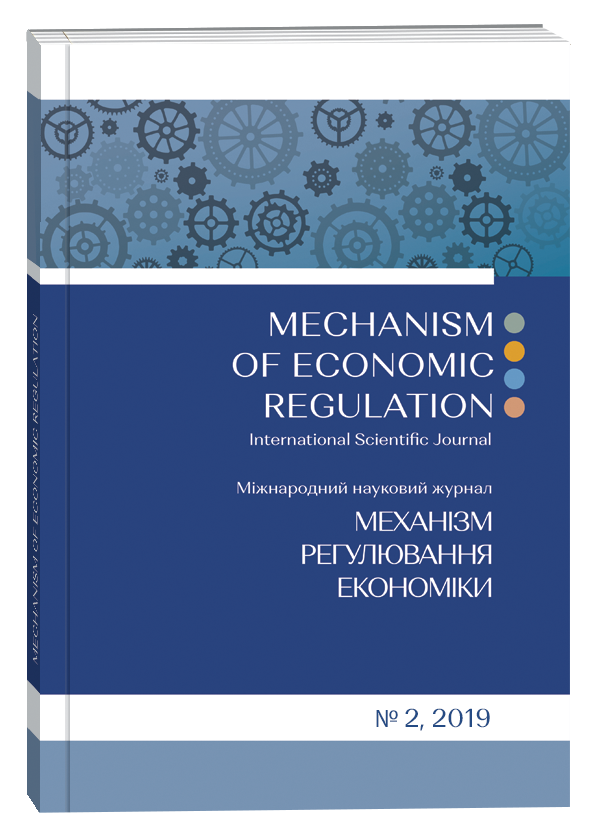ЗРОСТАННЯ ТА СОЦІАЛЬНИЙ КАПІТАЛ: ЕМПІРИЧНИЙ АНАЛІЗ ВЗАЄМОЗВ'ЯЗКУ
Анотація
Соціальний потенціал усе більше розглядається як фундаментальний фактор довгострокової розвитку та зростання. Соціальні детермінанти набули актуальності в результаті появи концепту інклюзивного зростання, змінилися пріоритети та інструменти політику. У статті проведено емпіричну перевірки гіпотези існування впливу рівня економічного розвитку країни на рівень розвитку її соціального капіталу на основі аналізу панельних даних. У цьому дослідженні як індикатор розвитку соціального капіталу використано Індекси соціального розвитку, запропоновані Міжнародним інститутом соціальних дисциплін, оскільки вони максимально відповідають вимогам щодо комплексності (включають шість інтегрованих показників Громадянська активність, Клуби та асоціації, Міжгрупова згуртованість, Міжособистісна безпека і довіра, Гендерна рівність, Інклюзія меншин), простоті вимірювання, стійкості та можуть бути використані як для локальному так і на національному рівнях. У статті побудовано панель, що включає дані за 20 країнами, поділених на чотири групи, відповідно до рівня економічного розвитку. Перша групи країни, які входять до складу G7 (Франція, Німеччина, Італія, Великобританія); друга група – економічно розвинуті країни, члени EU та Туреччина, третя групи – країни нові члени EU (Естонія, Латвія, Литва, Румунія); до четвертої групи – пострадянські республіки (Вірменія, Грузія, Російська Федерація, Україна). В результаті проведеного аналізу доведено, що параметри економічного розвитку країн не можна повністю виключити з числа детермінант соціального капіталу. Отримані показники свідчать, що зниження темпів економічного зростання призводить до посилення згуртованості людей у громадах, соціального контроля за ефективністю розподілу та використання коштів, забезпечення дотримання прав власності. Від зміни темпів економічного зростання напряму залежить рівень толерантності до расового розмаїття та відповідно ймовірність посилення негативних екстерналій. Також зростання добробуту людей позитивно буде впливати на рівень особистої безпеки громадян, зменшенню рівня криміналу, зростанню довіри.
Посилання
Putnam, R. (1993). Making Democracy Work: Civic Traditions in Modern Italy. Princeton: Princeton University Press, 167.
Social Capital. Research and Training. Retrieved from https://www.socialcapitalresearch.com.
Grootaert, C. & Narayan, D. & Jones, V. N. & Woolcock, M. (2004). Measuring social capital: An integrated questionnaire, 1–53.
Indices of Social Development. Retrieved from http://www.indsocdev.org.
Foa, R. & Tanner, J. C. (2012). Methodology of the Indices of Social Development, ISD Working Paper Series 2012-04. International Institute of Social Studies of Erasmus University Rotterdam (ISS). The Hague. Retrieved from http://www.indsocdev.org/faq.html.
Weizel, C. R. Inglehart, et al. (2005). Social capital, voluntary associations and collective action: Which aspects of social capital have the greatest ‘civic’ payoff? Journal of Civil Society, 1(2), 121–146.
Woolcock, M. and Narayan, D. (2000). Social capital: Implications for development theory, research, and policy. The World Bank Research Observer, 15, 225–249.
Putnam Robert, D. (2000). Bowling alone: the collapse and revival of American community. New York: Simon & Schuster.
Schuster, T. L., Kessler, R. C., Aseltine, R. H. (1990). Supportive interactions, negative interactions, and depressive mood. American Journal of Community Psychology, 18, 423–438. doi: 10.1007/BF00938116.
Fukuyama, F. (1995). Trust: the social virtues and the creation of prosperity. London: Hamish Hamilton.
Knack, S. and Keefer, Ph. (1997). ‘Does Social Capital have an Economic Payoff? A Cross- Country Investigation’. Quarterly Journal of Economics, 112(4), 1251–1288.
Schultz, T. P. (2002). Why Governments Should Invest More to Educate Girls. World Development, 30(2), 207–225.
Hjerppe, R. (2003). Social Capital and Economic Growth Revisited, VATT Discussion Papers, Helsinki.


